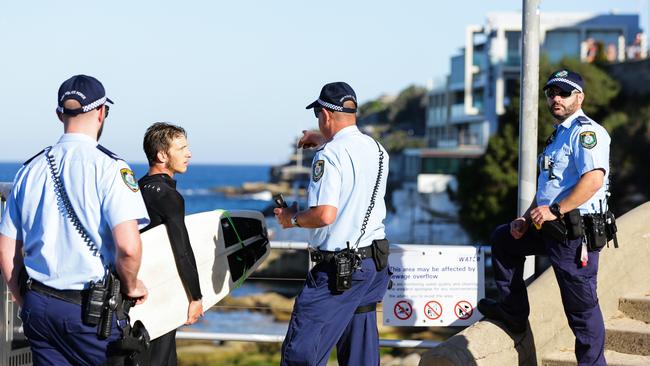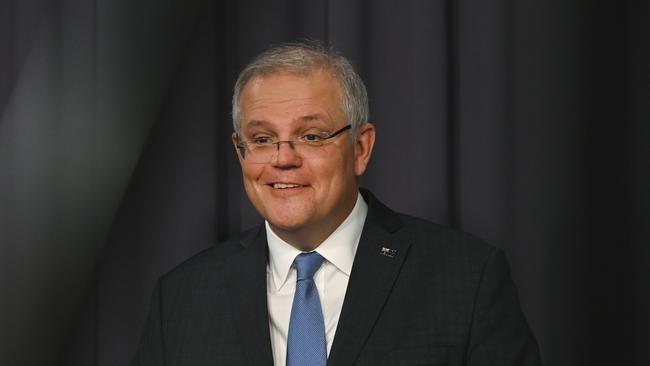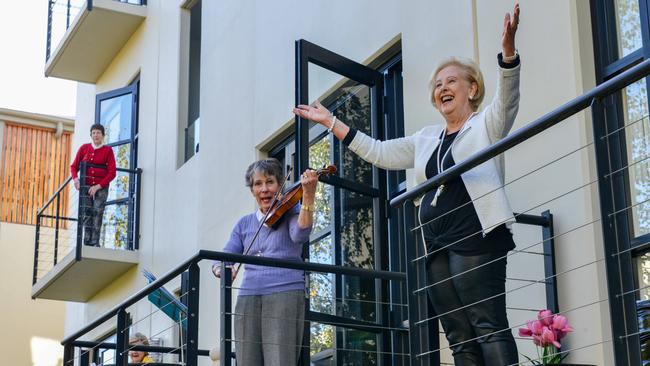David Penberthy: It’s time to loosen Australia’s lockdown
Thanks to the nation’s collective good sense, our coronavirus infection rates have flattened but our economic woes increase. Surely that is proof that we can start returning to normal, writes David Penberthy.
Rendezview
Don't miss out on the headlines from Rendezview. Followed categories will be added to My News.
The end is nigh. And I mean that in a good way.
After five or so weeks of lockdown, with such low infection rates and barely a dozen people still suffering from COVID-19 in our state, South Australia is now in the box seat to start looking at lifting the more onerous restrictions that have interrupted our lives during the pandemic.
One of the weird things about living in SA is that so much of our news comes from the eastern states and describes a world that simply doesn’t exist here.
The Victorian school closures for term two, that state’s total ban on golf, the graded return to school in NSW, the bans on the use of beaches in Sydney and Queensland with police hassling people for gathering in threes and fours or even swimming alone … none of that has happened in SA.

As South Australians, it has been confusing to watch the national TV coverage of this pandemic in its life-altering sense, as our lives have not been altered to anywhere the degree that they have in the eastern states.
I had a hit of golf with a mate last week at the North Adelaide course; on Anzac Day, my wife and kids headed to Belair National Park, teeming with people on a glorious Adelaide autumn day, riding their bikes, walking together and running in large numbers.
The good thing now is that because we are already ahead in the freedom stakes, if the numbers continue to remain low (indeed non-existent), we cannot so much dream but think legitimately about the prospect of enjoying even more freedom.
The great thing about our national and state-based response to COVID-19 has been the extent to which, unlike most appallingly in the US, the politicians were happy to relinquish much of their decision-making to the wisdom of the health professionals.
The gulf in the death rate between the US and many European countries, versus ours, is a testament to the good sense of the Australian approach.
Our politicians have tempered their natural tendency to run on instincts and embrace or reject ideas on the basis of their own ideology, and shown an enlightened preparedness to frame all action around science.
One of the best things Scott Morrison said this past month was that there is no longer any Left or Right, no red or blue as the Americans would put it, as he set about embracing a set of policies, some which would have put the late Chilean socialist Salvador Allende to shame. Ideology has mattered not. Science has been the basis from which all action has sprung.
However, we are now getting to a point where the pollies will have to start making more interventionist calls. As a state and a nation we must balance the likelihood of future threats to our health with the vast and immediate damage that is being done to our economy.
Economy is not a dirty word, either. The economy is the sum total of the ability of people to make enough money to tend to themselves and their family, and to tend to everyone else by paying tax back to the government to fund services.
The health challenge and the economic challenge has never been an either-or equation. They are both hugely important. And as the health part of the challenge subsides, we have to move sensibly but quickly to confront the economic challenge.

With the manner in which things are progressing in Australia and SA, it feels like we are at the point where our politicians need to tell the health experts that the threat of future infections or clusters is now so low that we have to start returning to normal.
When you look at the experience in Europe, where hundreds of people are still dying, the fact that the death rate has fallen from the thousands is being held up as a good news story, and a sign that people should start living their lives again.
Maybe the scale of the tragedy in countries such as Italy and Spain has warped the sense of what constitutes good news, although 100 deaths is better than 1000, I suppose.
In this country, and especially in this state, we have not even got close to the impact seen in Europe, yet are still holding the line by maintaining tight restrictions.
I am certainly not angling for anyone in power to be reckless about this or suddenly to send the scientists packing. The reason we have gone so well is that we have all pulled our heads in and done the right thing. But we can’t go on like this forever.

One of the most thought-provoking media voices in the discussion of our anti-coronavirus strategy has been The Australian’s economics editor, Adam Creighton.
As the happy owner of two parents aged in their 70s, I have been a bit taken aback by Creighton’s balls-out neo-con style.
He has argued for weeks now that COVID-19 is just another virus and that we have trashed our economies on the basis of an illness that predominantly kills elderly people and poses no great existential threat to the rest of us.
But Creighton has also made powerful comparisons between our reaction to the COVID-19 versus our reaction to the common flu, which by August last year had killed 430 Australians – many more than the coronavirus – without prompting mandated social distancing and a national economic shutdown.
Life is never without risk. Nor is politics. At some point very soon, the political desire to turn things back on again will have to hold sway over the natural scientific imperative to think through every possible worst case scenario.
Originally published as David Penberthy: It’s time to loosen Australia’s lockdown

